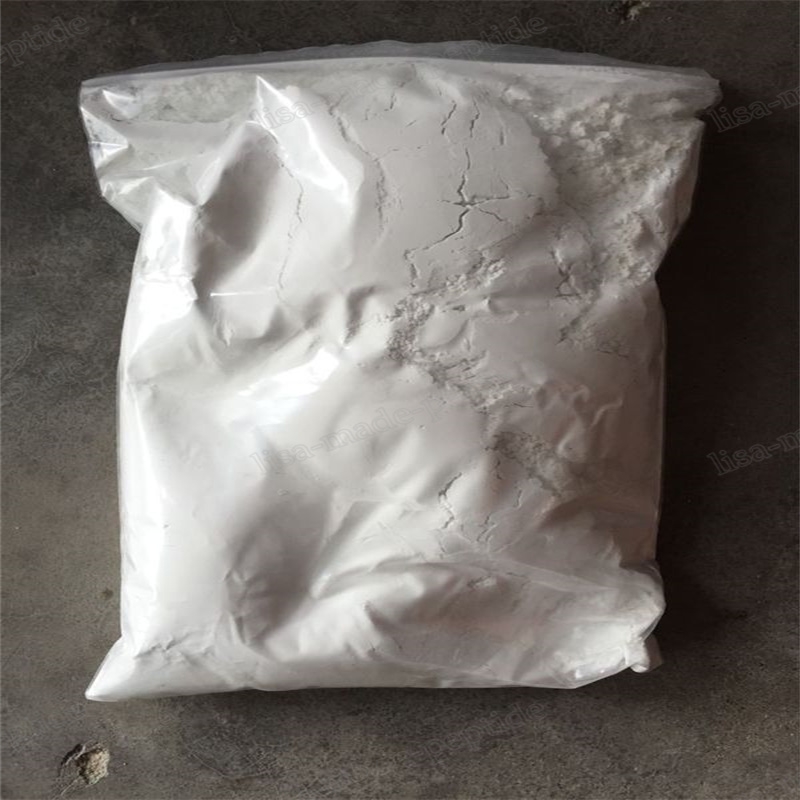-
Categories
-
Pharmaceutical Intermediates
-
Active Pharmaceutical Ingredients
-
Food Additives
- Industrial Coatings
- Agrochemicals
- Dyes and Pigments
- Surfactant
- Flavors and Fragrances
- Chemical Reagents
- Catalyst and Auxiliary
- Natural Products
- Inorganic Chemistry
-
Organic Chemistry
-
Biochemical Engineering
- Analytical Chemistry
-
Cosmetic Ingredient
- Water Treatment Chemical
-
Pharmaceutical Intermediates
Promotion
ECHEMI Mall
Wholesale
Weekly Price
Exhibition
News
-
Trade Service
【Market analysis of chemical machinery equipment network ]
Market analysis of chemical machinery equipment networkChemical machinery and equipmentAnalysis of the development situation of China's inspection and testing industry
Analysis of the development situation of China's inspection and testing industryAs of the end of 2019, there were 44,007 inspection and testing institutions in my country, and the operating income for the whole year of 2019 was 322.
509 billion yuan.
509 billion yuan.
From the perspective of the regional distribution of testing institutions, East China accounted for 27.
49%, North China accounted for 17.
43%, Central and South China accounted for 24.
29%, and the three major regions accounted for 69.
21%.
Judging from the distribution of provinces, the number of testing institutions in Shandong, Guangdong and Jiangsu.
49%, North China accounted for 17.
43%, Central and South China accounted for 24.
29%, and the three major regions accounted for 69.
21%.
Judging from the distribution of provinces, the number of testing institutions in Shandong, Guangdong and Jiangsu.
From the perspective of the regional proportion of the operating income of testing institutions, East China accounted for 35.
58%, North China accounted for 17.
85%, Central and South China accounted for 26.
71%, and the three major regions accounted for a total of 80.
14%.
From the perspective of province distribution, the operating income of Guangdong, Shanghai and Jiangsu testing institutions.
58%, North China accounted for 17.
85%, Central and South China accounted for 26.
71%, and the three major regions accounted for a total of 80.
14%.
From the perspective of province distribution, the operating income of Guangdong, Shanghai and Jiangsu testing institutions.
1.
The number of inspection and testing institutions in China and the size of the inspection and testing market have maintained simultaneous growth
1. The number of inspection and testing institutions in China and the size of the inspection and testing market have maintained simultaneous growth
The number of inspection and testing institutions in China and the size of the inspection and testing market have maintained simultaneous growth
From 2015 to 2019, my country's testing industry continued to expand.
According to statistics from the State Administration for Market Regulation, as of the end of 2019, there were 44,007 inspection and testing institutions in the inspection and testing service industry in my country (excluding Hong Kong, Macao and Taiwan), an increase of 11.
49% over 2018.
In 2019, it achieved operating income of 322.
509 billion yuan, an increase of 14.
75% over 2018.
According to statistics from the State Administration for Market Regulation, as of the end of 2019, there were 44,007 inspection and testing institutions in the inspection and testing service industry in my country (excluding Hong Kong, Macao and Taiwan), an increase of 11.
49% over 2018.
In 2019, it achieved operating income of 322.
509 billion yuan, an increase of 14.
75% over 2018.
There were 1,284,700 employees, an increase of 9.
40% over the previous year.
A total of 7,108,200 sets of various instruments and equipment, an increase of 12.
16% over the previous year, the original value of equipment and equipment assets of 368.
117 billion yuan, an increase of 15.
20% over the previous year.
In 2019, a total of 527 million inspection and testing reports were issued, an increase of 23.
13% over the previous year.
On average, 1.
4432 million reports were issued to the society every day.
The number of inspection and testing institutions and the size of the inspection and testing market have maintained simultaneous growth.
40% over the previous year.
A total of 7,108,200 sets of various instruments and equipment, an increase of 12.
16% over the previous year, the original value of equipment and equipment assets of 368.
117 billion yuan, an increase of 15.
20% over the previous year.
In 2019, a total of 527 million inspection and testing reports were issued, an increase of 23.
13% over the previous year.
On average, 1.
4432 million reports were issued to the society every day.
The number of inspection and testing institutions and the size of the inspection and testing market have maintained simultaneous growth.
2.
The number of testing institutions in the three major regions accounted for nearly 70%, ranking in Shandong and Guangdong
2. The number of testing institutions in the three major regions accounted for nearly 70%, ranking in Shandong and Guangdong
The number of testing institutions in the three major regions accounted for nearly 70%, ranking in Shandong and Guangdong
From a regional perspective, the scale of the six major domestic inspection and testing institutions in 2019 are: 27.
49% in East China, 17.
43% in North China, 24.
29% in Central and South, 12.
60% in Southwest, 9.
21% in Northeast, and 8.
98% in Northwest.
Among them, the three major regions of East China, North China, and Central South accounted for 69.
21% of the total number of inspection and testing institutions in the country, an increase of 0.
32 percentage points from the previous year.
49% in East China, 17.
43% in North China, 24.
29% in Central and South, 12.
60% in Southwest, 9.
21% in Northeast, and 8.
98% in Northwest.
Among them, the three major regions of East China, North China, and Central South accounted for 69.
21% of the total number of inspection and testing institutions in the country, an increase of 0.
32 percentage points from the previous year.
The proportion of East China decreased by 2.
03% year-on-year, the proportion of North China increased by 2.
47% year-on-year, the proportion of Central and Southern China decreased by 0.
12% year-on-year, the proportion of Northeast China decreased by 0.
47% year-on-year, and the proportion of Northwestern China increased by 2.
47% year-on-year.
An increase of 0.
34 percentage points, and the proportion of Southwest China decreased by 0.
18 percentage points year-on-year.
03% year-on-year, the proportion of North China increased by 2.
47% year-on-year, the proportion of Central and Southern China decreased by 0.
12% year-on-year, the proportion of Northeast China decreased by 0.
47% year-on-year, and the proportion of Northwestern China increased by 2.
47% year-on-year.
An increase of 0.
34 percentage points, and the proportion of Southwest China decreased by 0.
18 percentage points year-on-year.
In terms of provinces, the provinces with the highest number of inspection and testing institutions in 2019 are Shandong (3384), Guangdong (3381), Jiangsu (2840), Henan (2511), Zhejiang (2128), Hebei (2126), Sichuan (2099), Liaoning (1716), Hunan (1649), Hubei (1552).
The number of inspection and testing institutions in the above 10 provinces accounted for 53.
14% of the national total.
The number of inspection and testing institutions in the above 10 provinces accounted for 53.
14% of the national total.
3.
The three major regions accounted for over 80% of revenue, ranking Guangdong and Shanghai
3. The three major regions accounted for over 80% of revenue, ranking Guangdong and Shanghai
The three major regions accounted for over 80% of revenue, ranking Guangdong and Shanghai
From the perspective of the regional proportion of operating income, the proportion of regional operating income in 2019 is: East China 35.
58%, North China 17.
85%, Central South 26.
71%, Southwest 9.
72%, Northeast 4.
47%, Northwest 5.
67%.
Among them, the three major regions of East China, North China, and Central South accounted for more than 80% of the market share, specifically 80.
14%, a decrease of 0.
23 percentage points year-on-year.
58%, North China 17.
85%, Central South 26.
71%, Southwest 9.
72%, Northeast 4.
47%, Northwest 5.
67%.
Among them, the three major regions of East China, North China, and Central South accounted for more than 80% of the market share, specifically 80.
14%, a decrease of 0.
23 percentage points year-on-year.
In 2019, the provinces and cities with the highest total operating income are Guangdong, Shanghai, Jiangsu, Beijing, Zhejiang, Shandong, Sichuan, Hubei, Anhui, Henan.
The total operating income of the 10 provinces and cities accounted for 66.
97% of the national sales.
The total operating income of the 10 provinces and cities accounted for 66.
97% of the national sales.
In terms of income growth, there are 15 provinces, autonomous regions and municipalities whose growth rates exceed the national average.
They are: Xinjiang 37.
65%, Guangxi 31.
09%, Shanghai 30.
17%, Shanxi 23.
08%, Sichuan 22.
33%, Anhui 20.
26%, Yunnan 19.
37 %, Jiangxi 19.
21%, Inner Mongolia 19.
14%, Hebei 18.
66%, Shandong 18.
54%, Jiangsu 18.
04%, Liaoning 17.
53%, Hunan 15.
29%, Chongqing 15.
08%.
They are: Xinjiang 37.
65%, Guangxi 31.
09%, Shanghai 30.
17%, Shanxi 23.
08%, Sichuan 22.
33%, Anhui 20.
26%, Yunnan 19.
37 %, Jiangxi 19.
21%, Inner Mongolia 19.
14%, Hebei 18.
66%, Shandong 18.
54%, Jiangsu 18.
04%, Liaoning 17.
53%, Hunan 15.
29%, Chongqing 15.
08%.
For the above data and analysis, please refer to the "China Quality Inspection and Testing Industry Development Prospects and Investment Forecast Analysis Report" from the Qianzhan Industry Research Institute.
At the same time, the Qianzhan Industry Research Institute provides industrial big data, industrial planning, industrial declaration, industrial park planning, industrial investment promotion, etc.
solution.
At the same time, the Qianzhan Industry Research Institute provides industrial big data, industrial planning, industrial declaration, industrial park planning, industrial investment promotion, etc.
solution.
Original title: 2020 China's inspection and testing industry market status and analysis of regional competition patterns, the three major regions accounted for over 80% of revenue







